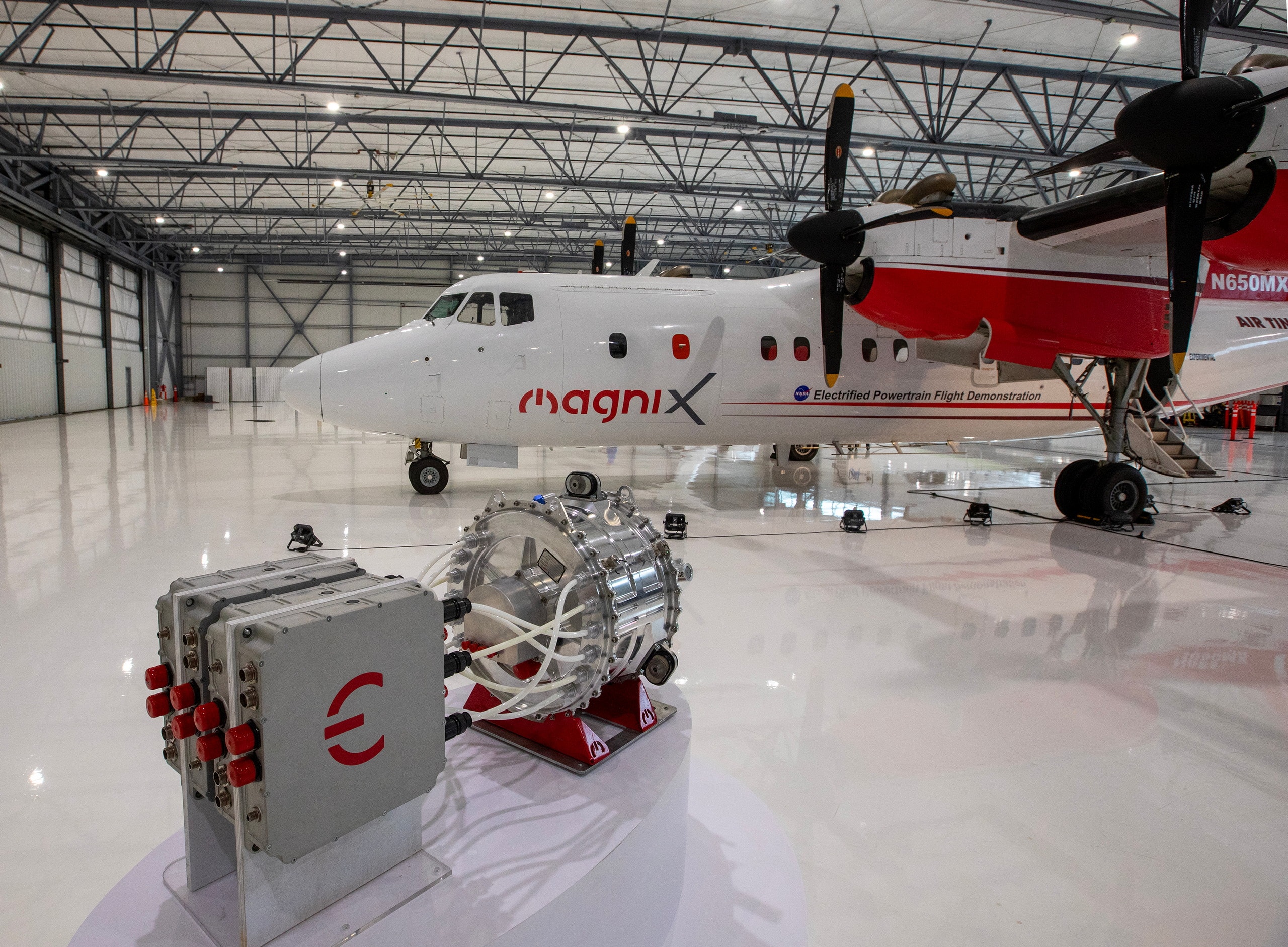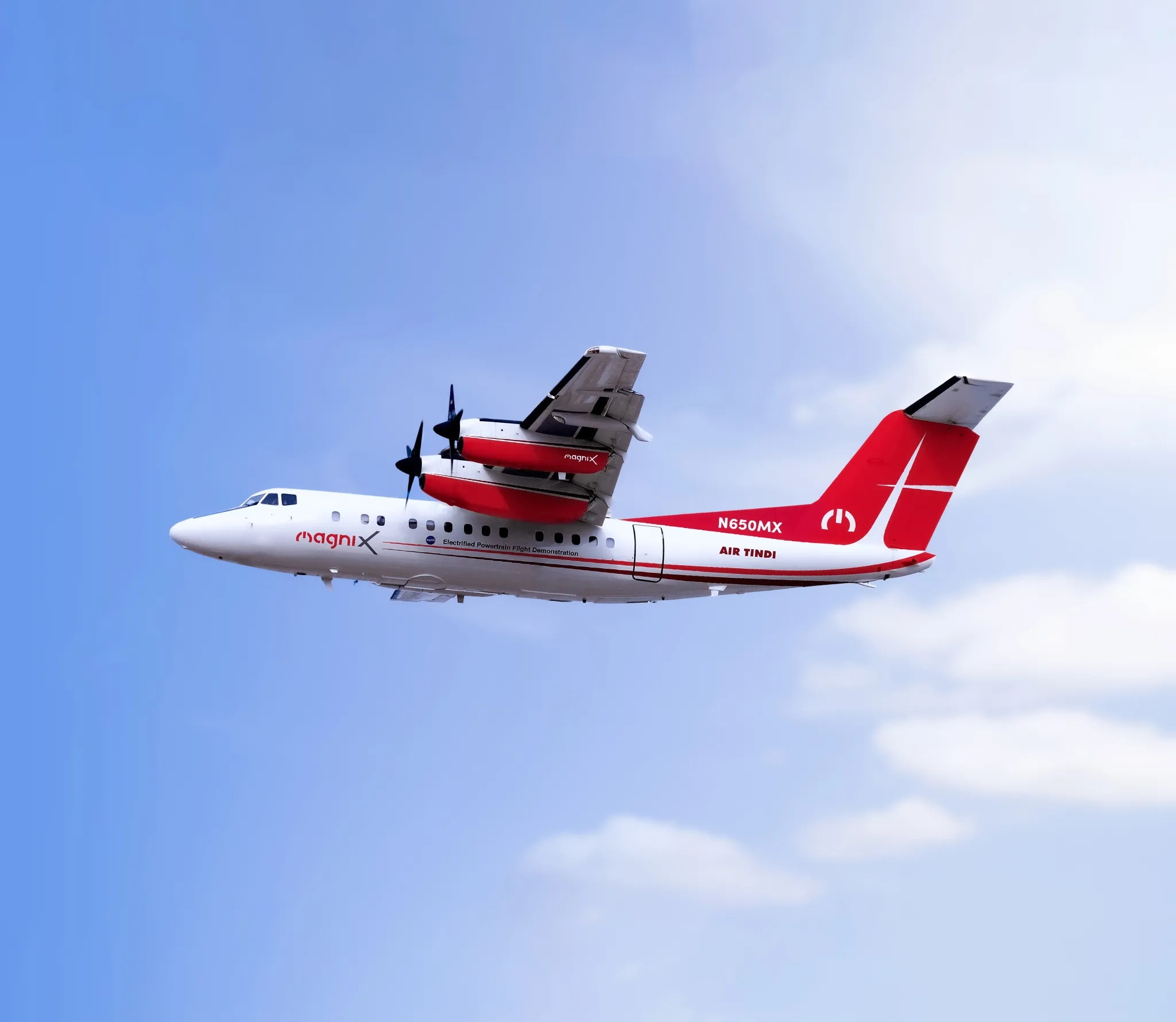NASA’s Electric Powertrain Flight Demonstration (EPFD) project, launched three years ago, is finally revealing its electrified aircraft prototype. Collaborating with magniX USA, NASA has revealed a modified De Havilland Dash 7 aircraft equipped with a hybrid electric propulsion system.
This innovative system combines traditional turbo propeller engines with electric motors, aiming to revolutionize commercial aviation by reducing harmful emissions and transitioning to a more sustainable future. The magni650 powertrain, a key component of this project, has already been selected for Eviation’s Alice aircraft, demonstrating its potential for widespread adoption in the industry.
With two magni650 units installed on the Dash 7, NASA and magniX are poised to conduct groundbreaking flight tests that will provide invaluable insights into the performance, efficiency, and reliability of hybrid electric propulsion systems.

As the world grapples with the urgent need to address climate change, EPFD represents a significant step forward in the development of cleaner and more sustainable transportation technologies. By successfully demonstrating the viability of hybrid electric propulsion in commercial aircraft, NASA and magniX hope to pave the way for a future where air travel is both environmentally friendly and economically viable.
The Electric Powertrain Flight Demonstration (EPFD) program took a significant step forward in April when the replacement powertrain successfully completed its initial series of tests at NASA’s Electric Aircraft Testbed (NEAT) facility. While further tests were planned for the summer, updates on their progress have been limited.
In August, the Dash 7 aircraft, which will serve as the platform for the EPFD program, was revealed with its new livery at King County International Airport. This aircraft, previously subjected to baseline testing, is now being modified to accommodate the new powertrain. Flight tests are anticipated to commence in 2026, with NASA contributing expertise in development, instrumentation, and data analysis.
The duration of the testing process remains uncertain, but NASA aims to leverage the insights gained to inform future standards and regulations for electrified aircraft. The ultimate objective is to develop a solution that can meet the needs of planes carrying up to 50 passengers, thereby reducing emissions and contributing to a more sustainable aviation industry.
MagniX is not the sole company involved in EPFD. GE is also a participant, with plans to fly a hybrid electric test bed based on a Saab 340B aircraft. However, since being selected for the NASA program, GE has provided limited information regarding the status of its work.
Beyond these two companies, other players are also involved in the electric aviation world, exploring various approaches to decarbonization. For instance, some companies are focusing on hydrogen powered aircraft, while others are investigating battery technologies that offer higher energy density and faster charging times.

The transition to electric aviation presents significant challenges, including the need for infrastructure development, advancements in battery technology, and addressing safety concerns. However, the potential benefits, such as reduced emissions and noise pollution, make it a compelling goal.
As the EPFD program progresses, the aviation industry will eagerly await the results and insights that will inform future developments in electric aviation. The success of this program could pave the way for a more sustainable and environmentally friendly future for air travel.

